|
 |
Miklos Barabas
|
|
(February 10, 1810 in Mărcuşa, now Romania - February 12, 1898 in Budapest) was a Hungarian painter. He his mostly known for his portrait paintings.
He was born in Kezdimerkosfalva. He spent most of his life in Pest, where he was director of the art society from 1862 until his death. He became a member of the Parliament of Hungary in 1867. He died in Budapest.
|
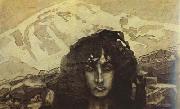 |
Mikhail Vrubel
|
|
Russian Symbolist Painter, 1856-1910
Russian painter and draughtsman. He was a pioneer of modernism, and his highly innovative technique broke with the traditions of the Academy of Arts in St Petersburg, where he had been a brilliant student; at the same time he felt dissociated from the social consciousness of The Wanderers. |
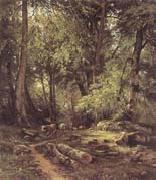 |
Mikhail Klodt
|
|
St. Petersburg,a descendant of an art dynasty1832-1902 |
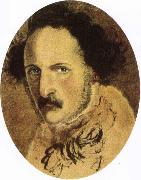 |
mikhail glinka
|
|
Period: Romantic (1820-1869)
Country: Russia
Born: June 01, 1804 in Novospasskoye, Smolensk, Russia
Died: February 15, 1857 in Berlin, Germany
Genres: Chamber Music, Keyboard Music, Miscellaneous Music, Opera, Orchestral Music, Vocal Music
|
 |
MIJTENS, Jan
|
|
Dutch Baroque Era Painter, ca.1614-1670
Nephew of Daniel Mijtens I. He was the son of Daniel's elder brother David, a saddle-maker in The Hague. Jan may have learnt to paint from his uncle Isaac Mijtens. After 1634 he may have trained with his uncle Daniel, who had by then returned to The Hague; Jan married Daniel's daughter Anna in 1642. In 1639 he had been admitted to The Hague's guild of painters, of which he became a governor in 1656. In the latter year he helped to found the painters' society De Pictura; from 1667-8 he was a governor of this society and from 1669-70 its dean. |
 |
Mihaly Zichy
|
|
(Hungarian pronunciation: [ˈmihaːj ˈzitʃi]; German: Michael von Zichy; October 15, 1827, Zala, Hungary - February 28, 1906, St. Petersburg, Russia) was a Hungarian painter and graphic artist.
Mihely Zichy was a significant representative of Hungarian romantic painting. During his law studies in Pest from 1842, he attended Jakab Marastoni's school as well. In Vienna he was Waldmeller's pupil in 1844. "Life Boat", his first major work, comes from this time. On Waldmeller's recommendation, he became an art teacher in St. Petersburg. He swore allegiance to freedom by painting the portrait of Lajos Batthyeny, the first Hungarian prime minister, in 1849. From 1850 onwards, he worked as a retoucher, but he also did pencil drawings, water colours and portraits in oil. The series on the Gatchina hunting ordered by the Russian tsar raised him to a court artist. He founded a society to support painters in need. "Autodafe" on the horrors of Spanish inquisition was painted in 1868. He travelled around Europe in 1871, and settled down in Paris in 1874.
He painted "Queen Elisabeth is Laying Flowers by the Coffin of Ferenc Deek" on Treffort's order. "Drinking Bout of Henry III", his next large scale picture came from 1875. "The Victory of the Genius of Destruction" painted for the Paris Exhibition was banned by French authorities because of its daring antimilitarist message. He left Paris in 1881 and returned to St. Petersburg after short stays in Nizza, Vienna and Zala (village). From this time onwards, he was mostly engaged in illustrations ("The Tragedy of Man" by Made - h, 1887, and twenty-four ballads of Jenos Arany, 1894 - 98).
|
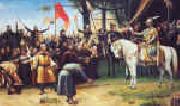 |
Mihaly Munkacsy
|
|
1844-1900
Hungarian
Mihaly Munkacsy Locations
Munkacsy started to paint during the years he spent in Arad as a joiner. With the help of partons be studied at the Viennese, Munich and Dusseldorf academies. Munkacsy painted his first major work, the outstanding "The Condemned Cell" in D??sseldorf, in 1872, together with his friend Laszlo Paal, he moved to Paris, where be lived until the end of his life. Munkacsy painted his genres in the style of realism between 1873 and 1875: "Midnight Ramblers", "Farewell". "Churning Woman", "Woman Carryng Brushwood", and "Pawnshop" were the zenith of his career. He married the widow of Baron de Marches in 1874, and his style changed from that time on. Departing from the typical subjects of realism, be produced colourful salon paintings and still-lifes. This was the period when be also turned to ladscape painting; his growing interest is marked by such great paintings as "Dusty Road". "Corn Field", and "Walking in the Woods". The assimilation of Laszlo Paal's style is apparent in the landscapes painted during the 1880s, such as "Avenue" and "The Colpach Park". His realist portraits - e.g. of Franz Liszt and Cardinal Haynald - were also born around this time, together with his religions paintings, such as "Christ in front of Pilate", "Golgotha" and later, "Ecce homo".
Towards the end of his career he painted two monumental works: "Hungarian Conquest" for the House of Parliament and a fresco entitled "Apotheosis of Renaissance, for the ceiling Kunsthistoriches. Museum in Vienna. |
 |
Miguel Ximenez
|
|
painted Saint John the Baptist; Saint Fabian and Saint Sebastian in 1494 |
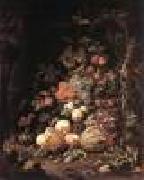 |
MIGNON, Abraham
|
|
Dutch Baroque Era Painter, 1640-1679
Dutch painter, was born at Frankfurt. His father, a merchant, placed him under the still-life painter Jacob Marrel, by whom he was taken to the Netherlands about 1660. He then worked under Jan Davidszoon de Heem at Utrecht, where in 1675 he married the daughter of the painter Cornelis Willaerts. Sibylle Merian (1647-1717), daughter of the engraver Matthew Merian, became his pupil and achieved distinction as a flower painter. He died at Utrecht. Mignon devoted himself almost exclusively to flowers, fruit, birds and other still-life, though at times he also attempted portraiture. His flower pieces are marked by careful finish and delicate handling. His favourite scheme was to introduce red or white roses in the centre of the canvas and to set the whole group of flowers against a dark background. Nowhere can his work be seen to better advantage than at the Dresden Gallery, which contains fifteen of his paintings, twelve of which are signed. Six of his pictures are at the Louvre, four at the Hermitage, and other examples are to be found at the museums of Amsterdam, |
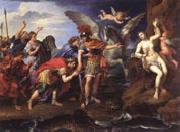 |
MIGNARD, Pierre
|
|
French Baroque Era Painter ,
b. 1612, Troyes, d. 1695, Paris
called "Le Romain" to distinguish him from his brother Nicolas, was a French painter. He was born at Troyes, and came of a family of artists; he also needs to be distinguished from his nephew Pierre (1640-1725), often called "Pierre II" or "Le Chevalier". In 1630 he left the studio of Simon Vouet for Italy, where he spent twenty-two years, and made a reputation which brought him a summons to Paris. Successful with his portrait of the king, and in favour with the court, Mignard pitted himself against Le Brun, declined to enter the Academy of which he was the head, and made himself the centre of opposition to its authority. The history of this struggle is most important, because it was identical, as long as it lasted, with that between the old gilds of France and the new body which Colbert, for political reasons, was determined to support. Portrait of Louise de Kerouaille, Duchess of PortsmouthShut out, in spite of the deserved success of his decorations of the cupola of Val de Grace (1664), from any great share in those public works, the control of which was the attribute of the new Academy, Mignard was chiefly active in portraiture. Turenne, Moliere, Bossuet, Maintenon (Louvre), La Valliere, Sevigne, Montespan, Descartes (Castle Howard), all the beauties and celebrities of his day, sat to him. His readiness and skill, his happy instinct for grace of arrangement, |
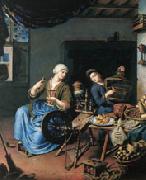 |
MIERIS, Willem van
|
|
Dutch Baroque Era Painter , b. 1662, Leiden, d. 1747, Leiden, Dutch painter, was the son of Frans van Mieris sr.. His works are extremely numerous, being partly imitations of the paternal subjects, or mythological episodes, which Frans habitually avoided. |
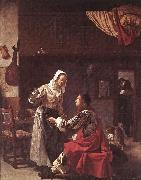 |
MIERIS, Frans van, the Elder
|
|
Dutch painter (b. 1635, Leiden, d. 1681, Leiden).
was a Dutch genre and portrait painter. The leading member of a Leiden family of painters, his sons Jan (1660-1690) and Willem (1662?C1747) and his grandson Frans van Mieris the Younger (1689?C1763) were also accomplished genre painters. Frans was the son of Jan Bastiaans van Mieris, a goldsmith, carver of rubies and diamond setter at Leiden. His father wished to train him to his own business, but Frans preferred drawing, and took service with Abraham Toorenvliet, a glazier who kept a school of design. In his father's shop he became familiar with the ways and dress of people of distinction. His eye was fascinated in turn by the sheen of jewelry and stained glass; and, though he soon gave up the teaching of Toorenvliet for that of Gerard Dou and Abraham van den Tempel, he acquired a manner which had more of the finish of the exquisites of the Dutch school than of the breadth of the disciples of Rembrandt. It should be borne in mind that he seldom chose panels of which the size exceeded 12 to 15 inches, and whenever his name is attached to a picture above that size we may surely assign it to his son Willem or to some other imitator. Unlike Dou when he first left Rembrandt, or Jan Steen when he started on an independent career, Mieris never ventured to design figures as large as life. Characteristic of his art in its minute proportions is a shiny brightness and metallic polish. The subjects which he treated best are those in which he illustrated the habits or actions of the wealthier classes; but he sometimes succeeded in homely incidents and in portrait, and not unfrequently he ventured on allegory. He repeatedly painted the satin skirt which Ter Borch brought into fashion, and he often rivalled Ter Borch in the faithful rendering of rich and highly-coloured woven tissues. But he remained below Ter Borch and Metsu, because he had not their delicate perception of harmony or their charming mellowness of touch and tint, and he fell behind Gerard Dou, because he was hard and had not his feeling for effect by concentrated light and shade. In the form of his composition, which sometimes represents the framework of a window enlivened with greenery, and adorned with bas-reliefs within which figures are seen to the waist, his model is certainly Dou. It is a question whether Houbraken has truly recorded this master's birthday. One of his best-known pieces, a party of ladies and gentlemen at an oyster luncheon, in the Hermitage at St Petersburg, bears the date of 1650. Celebrated alike for composition and finish, it would prove that Mieris had reached his prime at the age of fifteen. Another beautiful example, the "Doctor Feeling a Lady's Pulse" in the gallery of Vienna, is dated 1656; and Waagen, in one of his critical essays, justly observes that it is a remarkable production for a youth of twenty-one. In 1657 Mieris was married at Leiden in the presence of Jan Potheuck, a painter, and this is the earliest written record of his existence on which we can implicitly rely. Of the numerous panels by Mieris, twenty-nine at least are dated--the latest being an allegory, long in the Ruhl collection at Cologne, illustrating what he considered the kindred vices of drinking, smoking and dicing, in the year 1680. Mieris had numerous and distinguished patrons. He received valuable commissions from Archduke Leopold, the elector-palatine, and Cosimo III de' Medici, grand-duke of Tuscany. His practice was large and lucrative, but never engendered in him either carelessness or neglect. If there be a difference between the painter's earlier and later work, it is that the former was clearer and more delicate in flesh, whilst the latter was often darker and more livid in the shadows. When he died his clients naturally went over to his son Willem, who in turn bequeathed his painting-room to his son Frans. But neither Willem nor Frans the younger equalled Frans the elder. |
 |
Miel, Jan
|
|
Dutch Baroque Era Painter, ca.1599-1664
Flemish painter, active in Italy. Miel must have arrived in Rome in the early 1630s; he immediately came under the influence of Pieter van Laer (il Bamboccio) and the BAMBOCCIANTI. His earliest paintings of bambocciate (low-life scenes) are the Bowls Players (1633; Paris, Louvre) and its companion piece The Cobbler (Besan?on, Mus. B.-A. & Arch?ol.). Shortly after his arrival in Rome, Miel joined the Schildersbent, a confraternity of Netherlandish artists, and was given the nickname 'Bieco' ('threatening look'). His presence in Rome is documented from 1636 to 1658, when he moved to Turin and entered the service of Charles-Emanuel II, Duke of Savoy. Other early paintings that can be attributed to the 1630s include Halt at the Inn (Marseille, Mus. B.-A.) and Hunters' Rest (Warsaw, N. Mus.). Both are reworkings, in their subject-matter and composition, of contemporary paintings by van Laer |
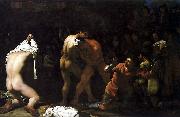 |
Michiel Sweerts
|
|
(29 September 1618-1664), also known as Michael Sweerts, was a Flemish painter of the Baroque period, active in Rome (1645-1656) in the style of the Bamboccianti. The Bamboccianti were known for depicting genre scenes of daily life, but Sweerts's contributions to this genre display greater stylistic mastery and social-philosophical sensitivity than many of his colleagues in this "school." Highly successful in Rome during his years there, Sweerts's reputation suffered a severe collapse not long after his death, lasting centuries; but thanks especially to the 2002 international monographic exhibition devoted entirely to him, Michael Sweerts: 1618-1664, he has begun once again to enjoy the esteem his work clearly merits.
Born in Brussels, he arrived in Rome in 1646, and rapidly moved into the circle of Flemish painters associated with Pieter van Laer (leader of the so-called Bamboccianti painters) and that resided near Santa Maria del Popolo. In 1647, he attended meetings of the Accademia di San Luca, although not as a member. Despite the fragmentary nature of evidence pertaining to his career in Rome and the post-mortem eclipse of his reputation, we know that Sweerts succeeded in creating for himself a sufficiently exalted reputation in the city so as to enter into the service of the ruling papal family itself, the Pamphilj, more specifically, Camillo Pamphilj, nephew of reigning Pope Innocent X who, at the encouragement of Camillo, bestowed upon Sweerts the papal title of Cavaliere di Cristo, the same honor enjoyed by the likes of Gian Lorenzo Bernini and Francesco Borromini. Despite working in the highest echelons of papal patronage in Rome, sometime between 1652 and 1654, for reasons unknown Sweerts left the Eternal City and returned to the North, and by 1656, he had returned to Brussels, where he joined the painter's guild. He joined the Paris Foreign Missions Society as a lay brother and became a devout Christian. In 1658 he made the guild a self portrait as a farewell gift and moved to Amsterdam, where he would oversee the building of a ship for travel with the aforementioned Missions Étrangeres to Palestine. |
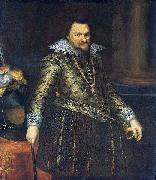 |
Michiel Jansz. van Mierevelt
|
|
(Delft, 1567 - Delft 27 June 1641) was a Dutch Golden Age painter.
He was the son of a goldsmith, who apprenticed him to the copperplate engraver Hieronymus Wierix. He subsequently became a pupil of Willem Willemz and Augusteyn of Delft, until Anthonie van Montfoort (Houbraken calls him Antony Blokland), who had seen and admired two of Mierevelt's early engravings, Christ and the Samaritan and Judith and Holofernes, invited him to enter his school at Utrecht.
He registered as a member of the Guild of St. Luke in The Hague in 1625.Devoting himself first to still lifes, he eventually took up portraiture, in which he achieved such success that the many commissions entrusted to him necessitated the employment of numerous assistants, by whom hundreds of portraits were turned out in factory fashion. Today over 500 paintings are or have been attributed to him.The works that can with certainty be ascribed to his own brush are remarkable for their sincerity, severe drawing and harmonious color, but comparatively few of the two thousand or more portraits that bear his name are wholly his own handiwork. So great was his reputation that he was patronized by royalty in many countries and acquired great wealth. The king of Sweden and the count palatine of Neuburg presented him with golden chains; Albert VII, Archduke of Austria, at whose court he lived in Delft, gave him a pension; and Charles I vainly endeavoured to induce him to visit the English court.
Though Mierevelt is chiefly known as a portrait painter, he also executed some mythological pieces of minor importance. Many of his portraits have been reproduced in line by the leading Dutch engravers of his time. He died at Delft.
The Rijksmuseum in Amsterdam has the richest collection of Mierevelt's works, chief of them being the portraits of William, Philip William, Maurice, and Frederick Henry of Orange, and of the count palatine Frederick V. At the Mauritshuis in The Hague are the portraits of four princes of the house of Orange, of Frederick V as king of Bohemia, and of Louise de Coligny as a widow. Other portraits by him are at nearly all the leading continental galleries, notably at Brunswick (3), Gotha (2), Schwerin (3), Munich (2), Paris (Louvre, 3), Dresden (4), Berlin (2), and Darmstadt (3). The town hall of Delft also has numerous examples of his work.
|
 |
Michiel Coxie
|
|
Coxie also spelled Coxcie or Coxien, Latinised name Coxius (1499 - 3 March 1592) was a Flemish painter who studied under Bernard van Orley, who probably induced him to visit the Italian peninsula.
Coxie was born in 1499 in Mechelen in what was then the Duchy of Brabant. At Rome in 1532 he painted the chapel of Cardinal Enckenvoirt in the church of Santa Maria dell'Anima; and Giorgio Vasari, who knew him, says with truth that he fairly acquired the manner of an Italian. But Coxie's principal occupation was designing for engravers; and the fable of Psyche in thirty-two sheets by Agostino Veneziano and the Master of the Die are favorable specimens of his skill.
Returning to the Netherlands, Coxie greatly extended his practice in this branch of art. But his productions were till lately concealed under an interlaced monogram M.C.O.K.X.I.N. In 1539, Coxie returned to Mechelen, where he matriculated and painted the wings of an altarpiece for the chapel of the guild of St Luke. The centre of this altar-piece, by Jan Mabuse, represents Saint Luke the Evangelist, patron of painters, portraying the Virgin; the side pieces contain the Martyrdom of Saint Vitus and the Vision of St John the Evangelist in Patmos.
At van Orley's death in 1541 Coxie succeeded to the office of court painter to the Regent Maria of Austria, for whom he decorated the castle of Binche. He was subsequently patronized by Charles V, Holy Roman Emperor, who often coupled his works with those of Titian; by Philip II of Spain, who paid him royally for a copy of Jan van Eyck's Agnus Dei, and also commissioned two copies of Van der Weyden's Descent from the Cross from Coxie; and by Fernando Álvarez de Toledo, Duke of Alva, who once protected him from the insults of Spanish soldiery at Mechelen. At that time, Coxie also designed tapestries for the Brussels manufacturers. |
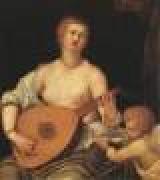 |
MICHELI Parrasio
|
|
Italian painter, Venetian school (before 1516 - 1578)
Italian painter and draughtsman. The natural son of a Venetian aristocrat, Salvador Michiel, he pursued his early training in the workshop of Titian and later in his career was associated with Paolo Veronese, who provided him with drawings for his paintings. He is known to have been in Rome before 1547. Micheli's earliest work is an altarpiece depicting the Virgin and Child with SS Lorenzo and Ursula (1535; Murano, S Pietro Martire), which was commissioned by Ursula Pasqualigo in memory of her deceased husband, the former Procurator Lorenzo Pasqualigo. There is also a Venus and Cupid (c. 1547; London, priv. col.) and a Lucrezia (c. 1547; London, Mond col.). In 1550 he married the daughter of a German baker. Several documented paintings have been destroyed or are untraced: the painting of Doge Lorenzo Priuli Accompanied by Ten Senators with Personifications of Fortune and Venice (1563), for which he received 225 ducats, was destroyed in the fire in the Doge's Palace of 1574. The work is known from a preparatory study (Berlin, Kupferstichkab.) and a contract of 22 October 1563. Five paintings known to have been in the Libreria Marciana that same year are also untraced. The large painting depicting the Adoration of the Dead Christ (Venice, S Giuseppe), signed and dated parrhasio Micheli dipinse nel 1573, includes a self-portrait. Micheli also painted portraits of Venetian noblemen (e.g. Girolamo Zane, Venice, Accademia; Tommaso Contarini, Venice, Doge's Palace) and associated with prominent men of letters including Paolo Giovio and Pietro Aretino. |
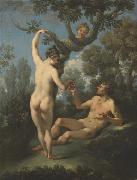 |
Michele Rocca
|
|
(1671-died after 1751) was an Italian painter of the Baroque period. He was born at Parma and practised in Rome, and died some time after 1751. He was also called also Parmigiano the younger or Michele da Parma. He worked in the manner of Pietro da Cortona.
|
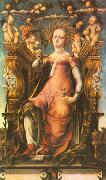 |
MICHELE PANNONIO
|
|
Hungarian Early Renaissance Painter, ca.1400-1464
Painter, active in Italy. He was one of the most important painters at the court of Ferrara in the mid-15th century and contributed to the creation of an indigenous Ferrarese style of painting. Most of his works have been destroyed. He may have been born in Hungary, as his name implies. There are parallels between his style and that of contemporary painters working in Hungary, but nothing is known of his early career. The suggestion that he can be identified with a Michele dai Unii, paid in 1415 for painting a standard for Leonello d'Este, |
 |
Michele da Verona
|
|
(Michele di Zenone) (born 1470) was an Italian painter of the Renaissance period.
He was born in Verona, a contemporary of Paolo Morando(Cavazzola), and may have assisted him in the decorative work for San Bernardino there. Inside the portal of San Stefano, Milan, is a large Crucifixion signed by him in 1500, and formerly in the Refectory of San Giorgio, of Verona. The same subject, dated by him in 1505, is in Santa Maria in Vanzo, Padua. In both pictures there is an imitation of the manner of Jacopo Bellini. In the church of Santa Chiara, Verona, are frescoes representing the Eternal, with Angels, Prophets, and the four Evangelists, dated 1509. Frescoes of later dates exist in the churches of Vittoria Nuova and Sant' Anastasia; while in the church of Villa di Villa, near Este, is a Madonna and Child, between SS. John the Baptist, Lawrence, Andrew, and Peter dated 1523.
|
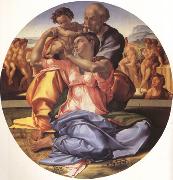 |
Michelangelo Buonarroti
|
|
b Caprese 1475 d Rome 1564
Born: March 6, 1475
Caprese, Italy
Died: February 18, 1564
Rome, Italy
Italian artist
Michelangelo was one of the greatest sculptors of the Italian Renaissance and one of its greatest painters and architects.
Early life
Michelangelo Buonarroti was born on March 6, 1475, in Caprese, Italy, a village where his father, Lodovico Buonarroti, was briefly serving as a Florentine government agent. The family moved back to Florence before Michelangelo was one month old. Michelangelo's mother died when he was six. From his childhood Michelangelo was drawn to the arts, but his father considered this pursuit below the family's social status and tried to discourage him. However, Michelangelo prevailed and was apprenticed (worked to learn a trade) at the age of thirteen to Domenico Ghirlandaio (1449?C1494), the most fashionable painter in Florence at the time.
After a year Michelangelo's apprenticeship was broken off. The boy was given access to the collection of ancient Roman sculpture of the ruler of Florence, Lorenzo de' Medici (1449?C1492). He dined with the family and was looked after by the retired sculptor who was in charge of the collection. This arrangement was quite unusual at the time.
Early works
Michelangelo's earliest sculpture, the Battle of the Centaurs (mythological creatures that are part man and part horse), a stone work created when he was about seventeen, is regarded as remarkable for the simple, solid forms and squarish proportions of the figures, which add intensity to their violent interaction.
Soon after Lorenzo died in 1492, the Medici family fell from power and Michelangelo fled to Bologna. In 1494 he carved three saints for the church of San Domenico. They show dense forms, in contrast to the linear forms which were then dominant in sculpture.
Rome
After returning to Florence briefly, Michelangelo moved to Rome. There he carved a Bacchus for a banker's garden of ancient sculpture. This is Michelangelo's earliest surviving large-scale work, and his only sculpture meant to be viewed from all sides.
In 1498 the same banker commissioned Michelangelo to carve the Piet?? now in St. Peter's. The term piet?? refers to a type of image in which Mary supports the dead Christ across her knees. Larger than life size, the Piet?? contains elements which contrast and reinforce each other: vertical and horizontal, cloth and skin, alive and dead, female and male.
Florence
On Michelangelo's return to Florence in 1501 he was recognized as the most talented sculptor of central Italy. He was commissioned to carve the David for the Florence Cathedral.
Michelangelo's Battle of Cascina was commissioned in 1504; several sketches still exist. The central scene shows a group of muscular soldiers climbing from a river where they had been swimming to answer a military alarm. This fusion of life with colossal grandeur henceforth was the special quality of Michelangelo's art.
From this time on, Michelangelo's work consisted mainly of very large projects that he never finished. He was unable to turn down the vast commissions of his great clients which appealed to his preference for the grand scale.
Pope Julius II (1443?C1513) called Michelangelo to Rome in 1505 to design his tomb, which was to include about forty life-size statues. Michelangelo worked on the project off and on for the next forty years.
Sistine Chapel
In 1508 Pope Julius II commissioned Michelangelo to decorate the ceiling of the chief Vatican chapel, the Sistine. The traditional format of ceiling painting contained only single figures. Michelangelo introduced dramatic scenes and an original framing system, which was his earliest architectural design. The chief elements are twelve male and female prophets (the latter known as sibyls) and nine stories from Genesis.
Michelangelo stopped for some months halfway along. When he returned to the ceiling, his style underwent a shift toward a more forceful grandeur and a richer emotional tension than in any previous work. The images of the Separation of Light and Darkness, and Ezekiel illustrate this greater freedom and mobility.
After the ceiling was completed in 1512, Michelangelo returned to the tomb of Julius and carved a Moses and two Slaves. His models were the same physical types he used for the prophets and their attendants in the Sistine ceiling. Julius's death in 1513 halted the work on his tomb.
Pope Leo X, son of Lorenzo de' Medici, proposed a marble facade for the family parish church of San Lorenzo in Florence to be decorated with statues by Michelangelo. After four years of quarrying and designing the project was canceled.
Medici Chapel
In 1520 Michelangelo was commissioned to execute the Medici Chapel for two young Medici dukes. It contains two tombs, each with an image of the deceased and two allegorical (symbolic) figures: Day and Night on one tomb, and Morning and Evening on the other.
A library, the Biblioteca Laurenziana, was built at the same time on the opposite side of San Lorenzo to house Pope Leo X's books. The entrance hall and staircase are some of Michelangelo's most astonishing architecture, with recessed columns resting on scroll brackets set halfway up the wall and corners stretched open rather than sealed.
Poetry
Michelangelo wrote many poems in the 1530s and 1540s. Approximately three hundred survive. The earlier poems are on the theme of Neoplatonic love (belief that the soul comes from a single undivided source to which it can unite again) and are full of logical contradictions and intricate images. The later poems are Christian. Their mood is penitent (being sorrow and regretful); and they are written in a simple, direct style.
Last Judgment
In 1534 Michelangelo left Florence for the last time, settling in Rome. The next ten years were mainly given over to painting for Pope Paul III (1468?C1549). |
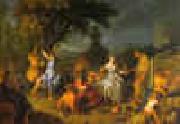 |
Michel-Ange Houasse
|
|
1680-1730
French
Michel Ange Houasse Gallery
Son of Rene-Antoine Houasse. He trained in his father's circle, becoming familiar with the academic teaching methods then fashionable in France and also in Italy, where he went with his father. In 1706 he joined the Acad?mie Royale de Peinture et de Sculpture in Paris, obtaining the rank of Academician in 1707 with the painting Hercules and Lichas (Tours, Mus. B.-A.). In Rome he probably became acquainted with the Marquis d'Aubigny, secretary to the powerful Princess Orsini, who was close to Philip V of Spain. The Spanish King already had the painter Henri de Favanne in his service in Madrid; Michel-Ange was recommended for work at the Spanish court by Count Jean Orry (1652-1719), the King's French finance minister, and arrived there in 1715. He had contact with the French artists at court and married the daughter of the French architect Rene Carlier. |
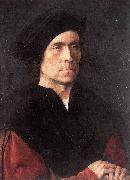 |
Michel Sittow
|
|
(c.1469-1525) was a painter from Reval (now Tallinn, Estonia) who was trained in the tradition of Early Netherlandish painting. For most of his life, Sittow worked as a court portrait painter, for Isabella of Castille, the Habsburgs and others in Spain and the Netherlands. He was one of the most important Flemish painters of the era.
|
 |
Michel Bouquet
|
|
(born 6 November 1925) is a French film actor. He has appeared in over 90 films since 1947. He was born in Paris, France.
|
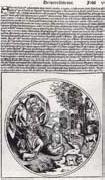 |
Michael Wolgemut
|
|
German Northern Renaissance Painter and Printmaker, ca.1434-1519,German painter and printmaker, was born and died in Nuremberg.Little is known of Wolgemut's private life. He trained with his father Valentin Wolgemut (who died in 1469 or 1470) and in 1472 he married the widow of his former apprentice-master, the painter Hans Pleydenwurff, whose son Wilhelm worked as an assistant, and from 1491 a partner, to his stepfather. Some consider Wilhelm Pleydenwurff a finer artist than Wolgemut, however he died in January 1494, when he was probably still in his thirties. Wilhelm's oeuvre remains unclear, though works in various media have been attributed to him. The importance of Wolgemut as an artist rests, not only on his own individual works, but also on the fact that he was the head of a large workshop, in which many different branches of the fine arts were carried on by a great number of pupil-assistants, including Albrecht Durer, who completed an apprenticeship with him between 1486-9. |
 |
Michael Willmann
|
|
(27 September 1630 - 26 August 1706) was a German painter. The Baroque artist became known as the "Silesian Raphael".
Willmann was born in Königsberg, Duchy of Prussia. He was educated by his father, the painter, Christian Peter Willmann. Michael went to the Dutch Republic in 1650 to learn from the masters, and he was inspired by the works of Rembrandt, Peter Paul Rubens, and Anthony van Dyck. For financial reasons he was unable to afford studying at the studio of a well-known painter.
After two years in the Netherlands, mostly spent in Amsterdam, Willmann returned to Königsberg, passed his master's examination, and began to travel. After visiting Danzig, Willmann went to Prague, where he stayed from 1653-55. He then spent about a year in Breslau. Willmann's first known paintings, commissioned by Abbot Arnold Freiberger of the Abbatia Lubensis abbey in Leubus, Lower Silesia, date from 1656. Leubus became the setting of much of Willmann's creativity.
From 1657-58 Willmann was in Berlin as the court painter of Frederick William, Elector of Brandenburg. He painted mythological scenes for the elector, presumably for his residence at Königsberg Castle. In 1660 Willmann returned to Leubus, which allowed him a large workshop.
Willmann's workship, modeled after those of the Dutch painters, quickly spread his fame. The extensive studio included his son Michael Leopold Willmann the Younger, his daughter Anna Elisabeth, and Anna Elisabeth's husband Christian Neuenhertz and son Georg Wilhelm Neunhertz. Willmann's studio also counted Johann Kretschmer from Glogau, Johann Jacob Eybelwieser from Breslau, the Cistercian Jacob Arlet from Gressau, and Willmann's stepson Johann Christoph Lischka.
Willmann became the leading painter of Silesia through his expressiveness, technical dexterity, and speed. Willmann worked on orders from the patriciate of Breslau, as well as churches and monasteries throughout Silesia, Bohemia, and Moravia. He received contracts for the Cistercian monasteries in Gressau, Heinrichau, Kamenz, Rauden, and Himmelwitz. With the assistance of his students and assistants, Willmann produced 500 paintings and frescos during his life. Numerous drawings of Willmann's were later used by engravers. |
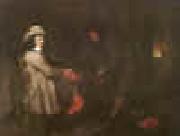 |
Michael Sweerts
|
|
Flemish
1618-1664
Michiel Sweerts (September 29, 1618 - 1664), also known as Michael Sweerts, was a Flemish painter of the Baroque period, active in Rome (1645-1656) in the style of the Bamboccianti. The Bamboccianti were known for depicting genre scenes of daily life.
Born in Brussels, he arrived in Rome in the mid 1640s, and rapidly moved into the circle of Flemish painters that had arrayed around Pieter van Laer, and that resided near Santa Maria del Popolo. In 1647, he attended meetings of the Accademia di San Luca, although not as a member. By 1659, he had returned to Brussels, where he joined the painter's guild.
He appears to have become mentally unstable in his last years. In Amsterdam, he joined the Jesuits as a "lay Brother" rather than a priest, and sailed from Marsaille to the East with a missionary group. Travelling to Jerusalem, and from there to Goa, where after causing tribulations to those around him, he died.
Sweerts is an enigmatic and difficult artist to categorize, since he seems to have absorbed a variety of influences to create an eclectic hybrid that can be described as a Netherlandish genre adaptation of an early tenebrist styles: a blend of Vermeer's genre of painting and Caravaggio-influenced full bodied figures.
|
 |
michael pacher
|
|
Michael Pacher (c. 1435??August 1498) was an Austrian Tyrolean painter and sculptor active during the last quarter of the 15th century. His best-known work is the altarpiece at the church in the village of St. Wolfgang, Austria. This altarpiece contains scenes from the life of Jesus and the Virgin Mary. His influence is primarily North Italian, and his work shares characteristics with that of painters such as Andrea Mantegna; however, German influences are also evident in his work, especially in his wood sculpture. He was most active from 1462 until his death.
Pacher was one of the earliest artists to introduce the principles of Renaissance painting into Germany. He was a comprehensive artist with a broad range of skills: sculpting, painting, and architecture of complex wood and stone. He painted structures for altarpieces on a scale unparalleled in North European art. His work is frequently correlated with the work of Andrea Mantegna.
|
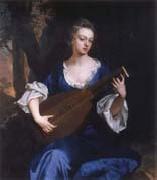 |
Michael Dahl
|
|
Swedish Baroque Era Painter, 1659-1743,Swedish painter, active in England. He studied under Martin Hannibal (d 1741) and later with David Kl?cker Ehrenstrahl. In 1682 he travelled to London, where he became acquainted with Godfrey Kneller and Henry Tilson, and in 1685 he left for Europe with the latter, working briefly in Paris before proceeding to Venice and Rome, where they stayed for about two years. In Rome Dahl converted to Roman Catholicism and gravitated towards the circle of Christina, former Queen of Sweden, who sat for him (Grimsthorpe Castle, Lincs). He returned to England with Tilson via Frankfurt and arrived in London in 1689; he stayed in England for the remainder of his career. |
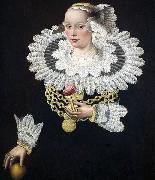 |
Michael Conrad Hirt
|
|
painted Portrait of Anna Rosina Tanck, wife of the mayor of Lubecker in1642 |
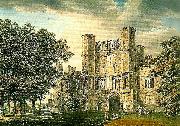 |
michael angelo rooker
|
|
Michael, Angelo, Rooker (1746 - 3 Mar 1801) was an English oil and watercolour painter of architecture and landscapes, illustrator and engraver. He was also the principal scene painter at the Haymarket Theatre. |
 |
Michael Ancher
|
|
Danish Painter, 1849-1927
He studied at the Kongelige Akademi for de Sk?nne Kunster, Copenhagen (1871-5), where his teachers Wilhelm Marstrand and Frederik Vermehren encouraged his interest in genre painting. He first visited Skagen in 1874 and settled there in 1880, having found that subject-matter drawn from local scenery was conducive to his artistic temperament. In Will he Manage to Weather the Point? (1880; Copenhagen, Kon. Saml.) several fishermen stand on the shore, evidently watching a boat come in. The firmly handled composition focuses on the group of men (the boat itself is invisible); each figure is an individual portrait that captures a response to the moment. Ancher's skill at grouping large numbers of figures with heroic monumentality compensates for his lacklustre colour sense. A change in his use of colour is noticeable in the works produced after an influential visit to Vienna in 1882; he was deeply impressed by the Dutch Old Masters at the Kunsthistorisches Museum, especially the Vermeers. Their effect on his painting can be seen in the Sick Girl (1883), |
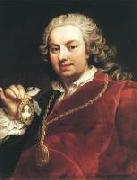 |
MEYTENS, Martin van
|
|
Dutch painter (b. 1695, Stockholm, d. 1770, Vienna).
was a Swedish-Austrian painter who has painted people of the royal Court of Austria such as Marie Antoinette, Maria Theresa of Austria, Francois III and his family, and many other royal paintings. His painting style has inspired many other painters to paint in a similar format. Martin van Meytens was born on June 16, 1695 and was later baptised in Stockholm, Sweden. He studied other great painter's works and in 1717 he had a great success in painting enamel paintings and miniatures, but later went on to greater task. In 1723 he began to paint large portraits of royal courts |
|
|
Meyer, Jeremiah
|
|
English Painter, 1735-1789
German enameller and painter, active in England. He was the son of a portrait painter at the court of W?rttemberg. He arrived in England c. 1749 and studied in London at St Martin's Lane Academy and then (1757-8) under Christian Friedrich Zincke; as a result of this training, much of Meyer's early work was painted on enamel. He exhibited (1760-67) at the Society of Artists and in 1761 was awarded its gold medal for a profile portrait of George III. In 1762 he became a naturalized Englishman. That year he was appointed miniature painter to Queen Charlotte and in 1764 painter in enamel to the King. Meyer was a founder-member of the Royal Academy and exhibited miniatures, enamels and watercolours there (1769-83). |
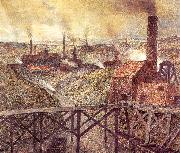 |
Meunier, Constantin
|
|
Belgian Painter and Sculptor, 1831-1905
Belgian sculptor, painter and draughtsman. He was directed towards an artistic career by his elder brother, the engraver Jean-Baptiste Meunier (1821-1900). He entered the Acad?mie des Beaux-Arts, Brussels, in September 1845 and studied under the sculptor Louis Jehotte (1804-84) from 1848. In addition, in 1852 he attended the private studio of the sculptor Charles-Auguste Fraikin. Gradually he came to feel that sculpture, at least in the traditional form taught in Brussels, was incapable of providing an adequate vehicle for either exposition or expression. Still at the Academy, he transferred to painting, therefore, in 1853, and followed the courses given by Fran?ois-Joseph Navez, studying in the evenings at the Saint-Luc studio, with Charles De Groux. He became friends with Louis Dubois, F?licien Rops and other rebellious young artists who were to found the Soci?t? Libre des Beaux-Arts in Brussels in 1868. With these, Meunier was part of the realist avant-garde, while seeking out a path of his own in painting. It has been said that De Groux had a decisive influence on Meunier. The latter partly denied this and insisted that he had felt the need very early to practise an art that was more devoted to the masses, to the people. His interest in everyday life, in the experience and condition of man, can already be discerned in the sketches and studies he made during his stays in the Trappist monastery of Westmalle, near Antwerp, between 1857 and 1875. |
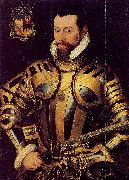 |
Meulen, Steven van der
|
|
Flemish Northern Renaissance Painter, active 1543-1568
Netherlandish painter active in England. He was a pupil of Willem van Cleve the younger (c. 1530-1564) in 1543 and was admitted to the Antwerp Guild of St Luke in 1552; by 1560 he had travelled to London, and he was naturalized in 1562. Van der Meulen brought with him a deep knowledge of the portrait style of Anthonis Mor. This sombre, shadowed style appealed to patrons at the English court who could not travel to Antwerp to sit to the greater artist. Early in 1561 an English merchant, John Dymoch, had visited Sweden in connection with negotiations for a marriage between Queen Elizabeth and Erik XIV, taking with him a Netherlandish painter described as 'Master Staffan', and it seems likely that this was van der Meulen. The King was much pleased with the resulting portrait of himself, for which he paid 100 daler |
|

